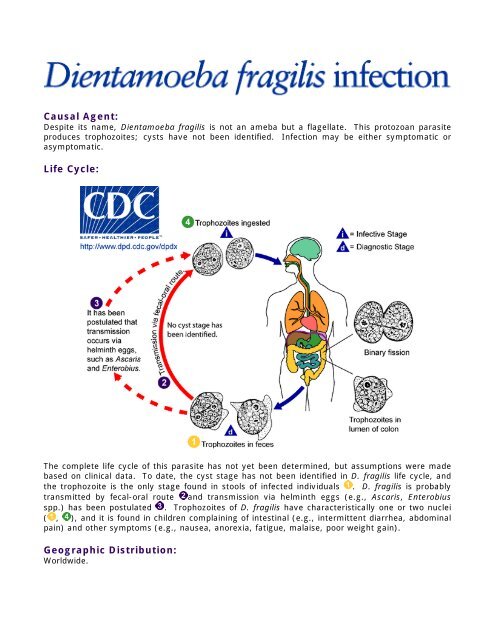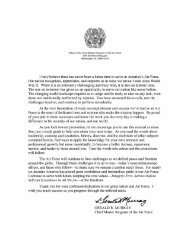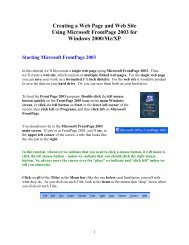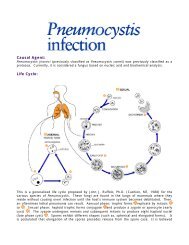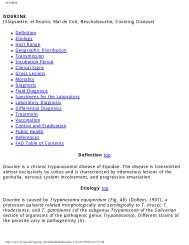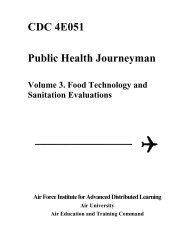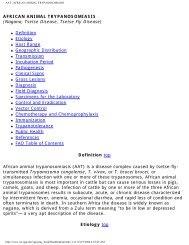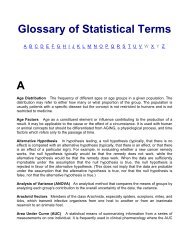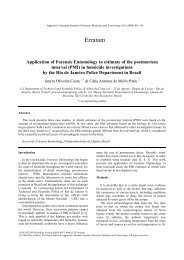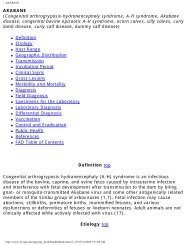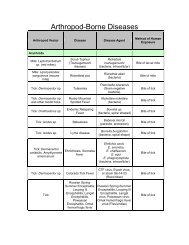Causal Agent: Life Cycle: Geographic Distribution:
Causal Agent: Life Cycle: Geographic Distribution:
Causal Agent: Life Cycle: Geographic Distribution:
Create successful ePaper yourself
Turn your PDF publications into a flip-book with our unique Google optimized e-Paper software.
<strong>Causal</strong> <strong>Agent</strong>:<br />
Despite its name, Dientamoeba fragilis is not an ameba but a flagellate. This protozoan parasite<br />
produces trophozoites; cysts have not been identified. Infection may be either symptomatic or<br />
asymptomatic.<br />
<strong>Life</strong> <strong>Cycle</strong>:<br />
The complete life cycle of this parasite has not yet been determined, but assumptions were made<br />
based on clinical data. To date, the cyst stage has not been identified in D. fragilis life cycle, and<br />
the trophozoite is the only stage found in stools of infected individuals . D. fragilis is probably<br />
transmitted by fecal-oral route and transmission via helminth eggs (e.g., Ascaris, Enterobius<br />
spp.) has been postulated . Trophozoites of D. fragilis have characteristically one or two nuclei<br />
( , ), and it is found in children complaining of intestinal (e.g., intermittent diarrhea, abdominal<br />
pain) and other symptoms (e.g., nausea, anorexia, fatigue, malaise, poor weight gain).<br />
<strong>Geographic</strong> <strong>Distribution</strong>:<br />
Worldwide.
Clinical Features:<br />
Symptoms that have been associated with infection include diarrhea, abdominal pain, anorexia,<br />
nausea, vomiting, fatigue, and weight loss.<br />
Laboratory Diagnosis:<br />
Infection is diagnosed through detection of trophozoites in permanently stained fecal smears (e.g.,<br />
trichrome). This parasite is not detectable by stool concentration methods. Dientamoeba fragilis<br />
trophozoites can be easily overlooked because they are pale-staining and their nuclei may<br />
resemble those of Endolimax nana or Entamoeba hartmanni.<br />
Diagnostic findings<br />
• Microscopy<br />
• Morphologic comparison with other intestinal parasites<br />
Treatment:<br />
Safe and effective drugs are available. The drug of choice is iodoquinol. Paromomycin*,<br />
tetracycline*, (contraindicated in children under age 8, pregnant and lactating women) or<br />
metronidazole can also be used.<br />
* This drug is approved by the FDA, but considered investigational for this purpose.


